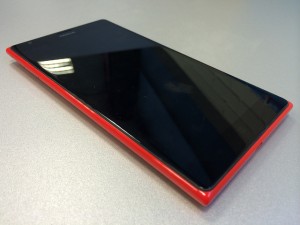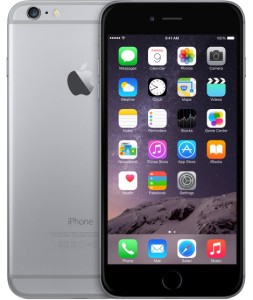Apple’s latest flagship smartphone was a huge success, being sold in millions of units since its launch early this fall. The iPhone 6 Plus is surely a great handset, beating many contenders on the Android side. But what about Windows Phone? Apple’s handsets are usually compared to their Samsung and Motorola competitors running Android OS, but there is a third major player on the smartphone OS market, quite popular in some parts of the world: Windows Phone. How about we compare the iPhone 6 Plus with one of the WP8 flagships, the Nokia Lumia 1520?

First of all, the hardware
We all know a lot about what the iPhone 6 Plus has under its hood: a dual-core Apple A8 processor running at 1,400 MHz, a PVR GX6450 GPU, 1024 Mb or RAM and up to 128 gigabytes of built in storage. In comparison, the Nokia flagship – released almost a full year before the Apple handset, has a quad-core Snapdragon 800 CPU running at 2.2 GHz, an Adreno 330 GPU and 2 gigabytes of RAM. The Nokia handset has no support for 64 bit operating systems, and this is a minus at its side. It has only 32 GB of internal storage, but it can be extended using a micro-SD card up to 128 gigabytes. Even if we consider the age difference, the Nokia seems slightly better at this point.
Screen size and properties
The thing most users observe first when looking at a smartphone is its screen. The Apple iPhone 6 Plus is large, with its 5.5″ screen diagonal and its dimensions (6.22 x 3.06 x 0.28 inches). Well, the Nokia Lumia 1520’s screen is a half inch larger – 6.0″ – but this does not mean a huge difference in the phablet’s full dimensions (6.41 x 3.36 x 0.34 inches). This is mostly because of the screen-to-body ratio – the Lumia 1520 has a larger screen with a smaller border, making it almost of the same dimensions as its Apple counterpart. Otherwise the two screens have quite similar properties: IPS LCD with 16 million colors, multi-touch, scratch resistant cover and a Full HD resolution (1920×1080). Due to the screen dimensions, the Apple iPhone 6 Plus has a better pixel density – 401 ppi vs. 368 ppi – but this is hard to observe to the naked eye.

Camera
The Nokia Lumia 1520 has a camera worthy of a flagship – a 20 megapixel sensor (F/2.4), capable of recording 1080p video at 30 FPS, a dual LED flash, and features very similar to the ones in the iPhone 6 Plus. The iPhone 6 Plus has a sensor with less physical pixels, but has a slightly better aperture (F/2.2), it can record 1080p video at 60 FPS, and 720p video at 240 FPS, making it a tool of choice for amateur slow motion videographers.
Both phones have 1.2 megapixel front cameras, enough for video messaging and selfies destined for sharing on social networks.
Battery Life
One of the most important features for modern day smartphones is their battery life. The Nokia Lumia 1520 is fitted with a much larger battery than its Apple counterpart – 3,400 mAh. This means that the Nokia can stand by for 32 days, while the iPhone 6 Plus can only stand by for half of that time. The talk time through a 3G connection is similar for both – 24 hours for the iPhone and 25 hours for the Nokia.
With Lumia 1520 Microsoft / Nokia has renounced to one of its main advantages – the user replaceable battery. It’s a shame – I, for one, consider this one of the best features, allowing me to buy a new battery for my phone instead of taking it to an authorized service (quite costly after the warranty expires). It has, in turn, something extra – wireless charging, a technology promised by many for this year but realized by just a few.
Other features
First of all, one major difference between the two: the iPhone 6 Plus has an aluminium body, versus a plastic body on the Nokia Lumia. I didn’t realize the difference until recently, but now I do – an aluminium body makes a phone more resistant and cooler to hold in one’s hand.
Both phones have the latest versions of their respective operating systems – the Lumia was launched with Windows Phone 8, while the iPhone 6 Plus with the iOS 8, and both of them can be updated to the latest, 8.1 version of them (is it a coincidence?). Both support GPS and GLONASS, both have the same sensors (the iPhone 6 Plus has one extra barometer). Both have NFC, but the iPhone uses it for Apple Pay only. Both have WiFi, Bluetooth 4.0, high speed mobile broadband, and every other feature one might expect from a modern day smartphone.
The one major difference between the to is that the Nokia Lumia 1520 is one full year older.
Price
Business users might find the Nokia Lumia 1520 a bit more useful due to its 15GB free OneDrive storage and the built-in Microsoft Office suite it comes with. Besides, it has a much better price at this point – it can be purchased from the Microsoft Store for $584.99 with no contract, or for $99 with a new AT&T contract (new customer).
At the same time the 16GB version of the iPhone 6 Plus costs $749 at T-Mobile with no contract, and $299 with a two-year contract at AT&T (and with the same price at Verizon and Sprint).

Conclusion
One of the reasons why Microsoft’s handsets haven’t become as popular as the iOS and Android running ones is the relatively small number of apps available for them. This will hopefully change with the release of the latest mobile Windows next year (probably Windows Phone 10).
As a Windows Phone user (I own a Lumia 620 with Windows Phone 8.1 on it) I would be sure what to choose if I would be to change my handset (I don’t plan to at this time). The Lumia does some small things better, and it is also significantly cheaper. The Apple handset has the upper hand when it comes to video, and is also a bit smaller. Both phones have their pros and cons…
Are you an iPhone 6 Plus user? Are you a Nokia fan? Tell us your views on which flagship would be the one you would choose, and why?
